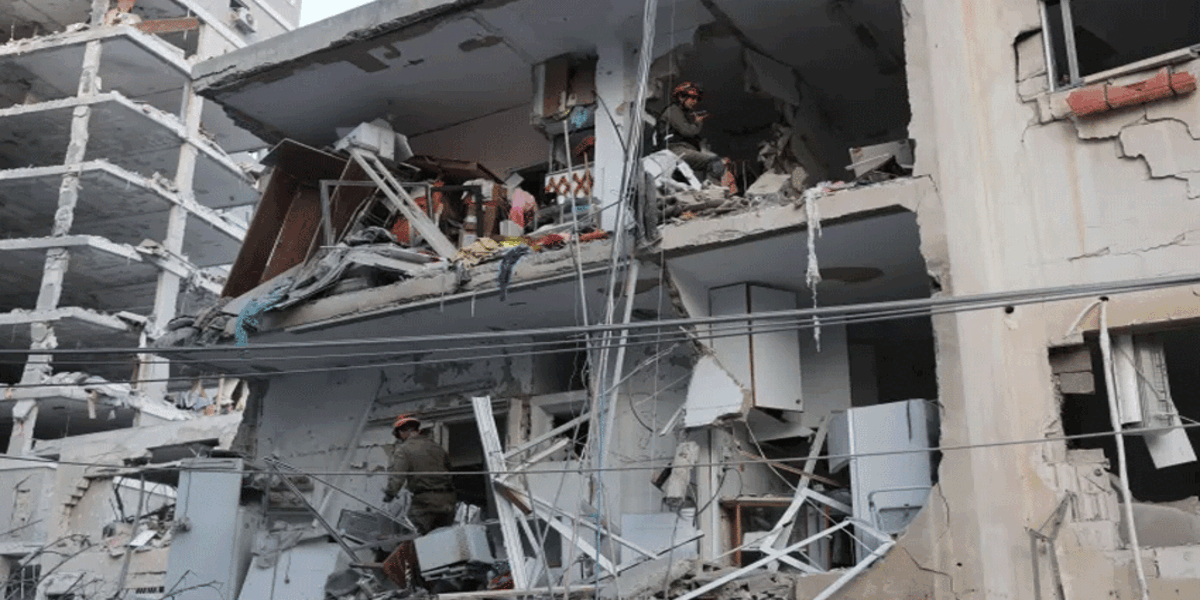Iran launched a devastating retaliatory missile and drone attack on Israel late Saturday night, marking the most direct and deadly confrontation between the two countries in years. At least 13 people were killed and over 200 injured in what Iranian officials dubbed Operation True Promise III.
The large-scale offensive, involving over 100 supersonic ballistic missiles and drones, struck key Israeli cities including Tel Aviv, Haifa, and Jerusalem, targeting both civilian and military infrastructure. Sirens blared through the night as terrified residents sought refuge in underground shelters.
Read More: Black Box Recovered from Air India Crash Site in Ahmedabad
The attack follows Israeli airstrikes earlier in the week that killed senior Iranian military leaders and nuclear scientists, including Major General Mohammad Bagheri, Brigadier General Amir Ali Hajizadeh, and General Gholam Ali Rashid. Iranian officials vowed retaliation, declaring that “no part of Israel will be safe.”
In Saturday’s assault, Haifa’s oil refineries were set ablaze, sending thick plumes of black smoke into the night sky. Israeli officials confirmed significant damage to power grids, oil depots, and ammonia tanks—raising environmental and public safety concerns. Power outages were reported in Nazareth, Afula, and Galilee due to what Israeli media called “precision-guided strikes.”
Read More: Pakistan Takes Major Step After Israel Strikes Iran
The Iron Dome defense system was activated but reportedly struggled to intercept the barrage, which included hypersonic and radar-evading missiles. Tel Aviv witnessed the collapse of a multi-storey residential building, with three civilian deaths confirmed, including a woman.
In total, 13 fatalities have been confirmed, with 35 people still missing. Hospitals across Israel are operating under emergency conditions, treating over 200 injured individuals.
Israeli Counterattack Hits Tehran
In a swift response, Israeli air forces launched strikes on Tehran, targeting the Iranian Ministry of Defence and a military research complex in the Nobaniyed district. Explosions rocked the Iranian capital, with multiple blasts reported overnight.
Additionally, Israeli sources claimed the assassination of Mohammed Al-Ghammari, the military chief of Yemen’s Houthi militia, in a separate airstrike.
Leadership Threats and Global Reactions
An Israeli military spokesperson stirred controversy by suggesting Ayatollah Khamenei could be a future target:
“We do not want to say that Ayatollah Khamenei is our target… but no option is off the table.”
Iranian authorities condemned the remarks, calling them “dangerously provocative.” Tehran warned of further retaliation if Israeli attacks on Iranian soil continue.
The Iranian Islamic Revolutionary Guard Corps (IRGC) confirmed the use of Emad, Qadr, and Kheibar Shekan missiles—long-range systems known for their precision and evasion capabilities.
International Calls for Restraint
The United Nations expressed deep concern, urging immediate de-escalation. UN Secretary-General António Guterres stated he was “deeply alarmed” by the attacks and called on both sides to exercise “maximum restraint.”
The United States, while reaffirming its support for Israel’s security, cautioned against actions that could “further destabilize the Middle East.” A U.S. State Department spokesperson added:
“We are closely monitoring the situation and are in contact with regional partners to contain the fallout.”
As tensions reach critical levels, observers fear the conflict could expand, drawing in other regional powers and tipping the balance in an already fragile region.


